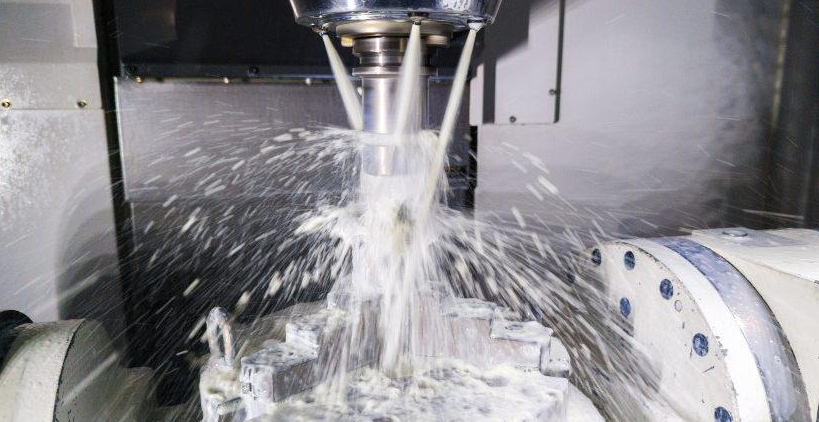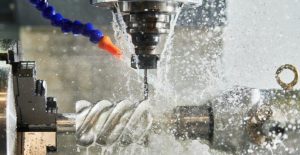
Reduce water consumption in industry
Water is costly. All living beings need it to quench their thirst. However, people quickly realized that the seemingly limitless resource can also be used for many other purposes.
Gradually, water consumption in industry grew rapidly. At the same time, climate change means that water supplies are becoming scarce in many regions. Read here why companies need to reduce their consumption of this precious liquid and how this can be done.
Why climate change is causing water shortages
The fact that water regenerates itself again and again in nature is due to the ability of the air to hold water vapour. The amount of vapor depends on the air temperature. The warmer it is, the more moisture it can hold over open water and wet surfaces. Humid air is lighter than dry. It rises to higher layers of the atmosphere, is blown away by the wind and reaches places that are so cold that the air has to let go of the water again. It then falls back to earth as precipitation in the form of rain or snow. Global warming is increasing the water content in the atmosphere. To make matters worse, water vapor is one of the greenhouse gases and drives global warming. The earth is drying out more and more. The industry must adapt to reducing water consumption.
Water consumption in industry
The most effective way to reduce water consumption is where large amounts of this resource are used. This is the case when water is used as a solvent for surfactants, salts, acids and alkalis and as a means of transport for substances, mechanical energy and heat. It is used as a solvent on a large scale in the metal processing industry. There, water is a component of cooling lubricants that enable workpieces to be machined. Surface technology uses aqueous solutions to clean, pickle and coat parts. In the chemical industry, most of the water is used for cooling or heating the reaction mixture.
Ways to reduce water consumption
In order to reduce water consumption in industry, three main practices are used, depending on the area of application:
- closed water circuits
- extension of downtimes
- recovery from waste water
- closed water circuits
Closed circuits are the means of choice when water is used as an energy source. The required temperature level decides which state of aggregation is required. Liquid water is used for cooling or heating in the range from 0 °C to 100 °C. Hot water can be used very well in heating circuits. For cooling water, it is more economical to release the heat extracted from the process to the environment via evaporation in cooling towers. In these open circuits, the evaporated water has to be replenished. Since the salt content of the water would continue to increase as a result of evaporation, it is also necessary to discharge a certain amount of water and replace it with fresh water. Water consumption is reduced if the desalination water is treated or used as process water.
Temperatures above 100 °C can be reached through the use of steam. As the steam gives off heat to the process, it usually condenses. The condensate can be returned and reused as boiler feed water.

Extension of downtimes
Water-mixed cooling lubricants and surface technology baths gradually lose their effectiveness over the course of use. They are therefore disposed of at certain intervals and replaced with a new batch. Water consumption can be significantly reduced if the service life is extended through maintenance measures. Water-mixed cooling lubricants can be maintained by regularly separating out tramp oils and filtering out fine chips and dust. This also applies to cleaning baths, in which the cleaning agents have to be added afterwards.
Recovery of the water from the waste water
Water consumption in industry can be significantly reduced if the waste water produced is treated and reused as service water. In wastewater treatment, valuable ingredients can often be recovered in addition to the water. Various processes are used for waste water treatment. It often takes place in several stages. Solids can be removed from the water with filters. Suspended matter can be flocculated. Skimmers and separators are used to remove oils. In addition, vacuum evaporation, ultrafiltration or reverse osmosis can be used for water treatment.
Vacuum evaporation
With vacuum evaporation, the heat is supplied at negative pressure. This results in a lower boiling point. The vapor then condenses at normal atmospheric pressure and a higher temperature. Due to the temperature difference, the evaporation heat can be recovered and fed into the process.
Ultrafiltration
With ultrafiltration it is possible to remove very small particles and macromolecules from the water. Membranes are used as the filter medium, the pores of which are adapted to the size of the substances to be removed.

Reverse osmosis
Reverse osmosis is a process in which natural osmosis is reversed using increased pressure. Natural osmosis is a process in which a solvent penetrates through a porous skin. Driving force is a concentration difference between solutions on both sides of this skin. The solvent penetrates into the area of higher concentration until the resulting increase in pressure terminates the process or ruptures the skin. The process can be observed, for example, with ripe cherries that burst after a downpour. In reverse osmosis, stable membranes take over the task of the skin. The pressure is increased on the high concentration side until it exceeds the osmotic pressure. Then the solvent permeates through the membrane to the low concentration side.

